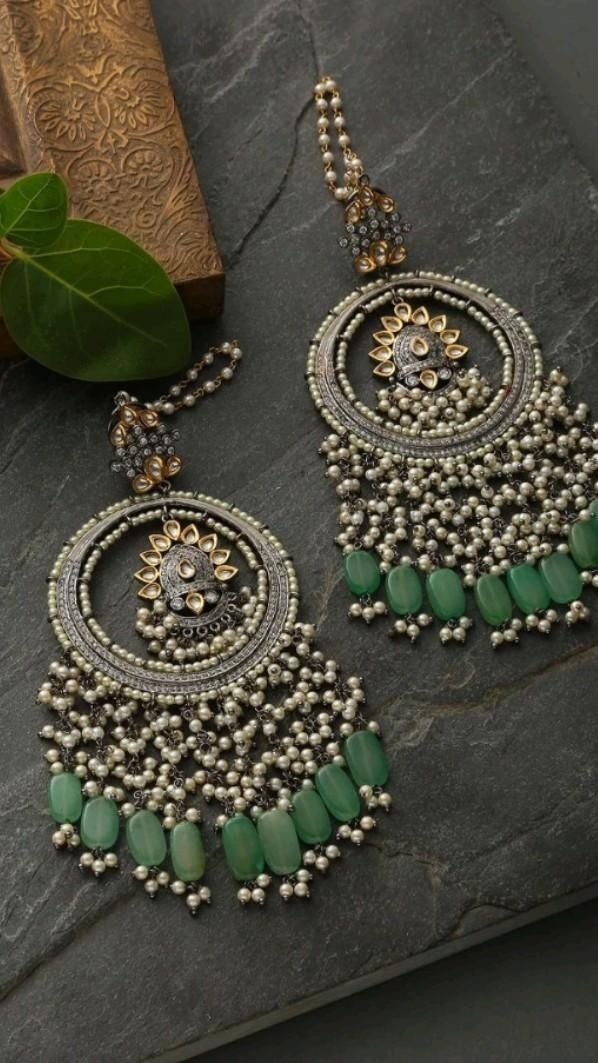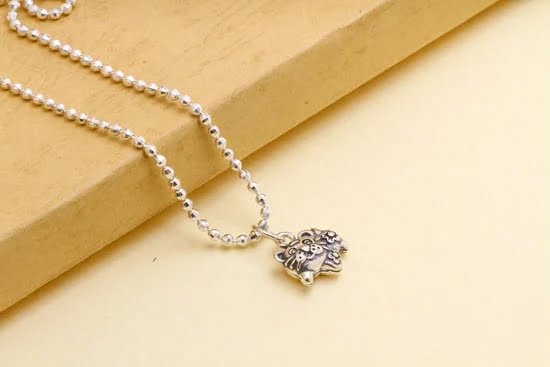Jewelry hallmarks have been in existence since the 13th Century, when King Edward I of England enacted a law requiring all gold and silver items to be stamped with a mark to indicate its purity. This type of regulation helped protect consumers from unscrupulous merchants who overcharged or sold subpar items for higher prices.
Over time, other precious metals such as platinum were also included under this law. Nowadays, platinum jewelry hallmarks are used to certify that an item is made of genuine platinum metal by indicating its purity level and identifying the manufacturer or craftsman who created it.
Hallmarking today Currently, many countries across the globe regulate the manufacturing of platinum jewelry by using independent Assay offices for hallmarking purposes. An Assay office can be run either by a government body or a private organization, and they are responsible for testing any precious metal items submitted to them for appraisal.
During this process various tests will be performed on the metal to determine its exact composition and quality, including determining if it is indeed made of genuine platinum rather than an alloy or other metal. Once approved by an Assay office, each item is then imprinted with unique symbols and numbers called “hallmarks” which represent the item’s purity level and provide contact information for the manufacturer or craftsman who created it.
The Benefits of Hallmarks Platinum jewelry hallmarks serve two important roles – they help protect the consumer from buying counterfeit products as well as provide evidence that each piece is crafted from authentic precious metals such as platinum. Having a hallmark on your jewelry verifies that you have invested in something of significant value while also maintaining legal protection for yourself in case any discrepancies arise between you and your seller.
Jewelers typically include these symbols along with their display cards when selling new pieces so customers know exactly what they are purchasing before checking out. Furthermore, being able to identify jewelry with hallmarks can also make tracking down a particular piece much easier should it ever become lost or stolen.
Understanding Platinum Jewelry Hallmarks
Platinum is one of the most prestigious and valuable metals in the world, so it’s no surprise that gold, silver, and platinum jewelry are much coveted. But before you buy or wear a piece of jewelry made with this precious metal, it’s worth knowing a little bit about Platinum Jewelry Hallmarks.
Platinum Jewelry Hallmarks are marks that tell us about unique information about the jewelry including manufacturer, purity level (in grams), country of origin or hallmark registrar name. Generally speaking, hallmarks identify the quality and quantity of a particular metal used to produce an item and help differentiate one item from another.
It’s important to note though, that all Platinum jewelry must be marked with at least some type of Hallmark stamp in order for buyers to know exactly what they’re purchasing.
When looking at platinum jewelry between buyers and sellers alike there are many advantages that come with understanding how to read these helpful labels:
- 1. Accurate Pricing – Knowing the specifics on a certain piece improves the ability to get an accurate price for it.
- 2. Guarantees Authenticity – Hallmarks act as proof and authenticity when determining if an item is legitimately made out of platinum.
- 3. Increase Trust & Confidence – Understanding how to view hallmarks can give consumers more trust and confidence in their purchases.
- 4. Quality Assurance – Checking hallmarks will let buyers know immediately if they’re getting a good quality product.
Different Types of Platinum Jewelry Hallmarks
Platinum jewelry hallmarks indicate the purity of the platinum alloy used to make up the piece. Platinum is an incredibly strong, long-lasting metal that has been used in jewelry for centuries.
It is resistant to tarnish and fade, making it perfect for fine jewelry pieces that you can pass down from generation to generation. While all platinum jewelry will have a stamp indicating its purity and origin, there are several other types of marks that you should be aware of when purchasing a platinum piece.
One common type of hallmark is called a “fineness mark” or “purity mark”. This mark indicates the percentage of pure platinum content in the item, mixed with other metals such as nickel or iridium. In most cases, the fineness mark will appear in increments of 1000 parts per thousand (1000ppt).
For example, a 950ppt fineness mark would mean that there is 95% pure platinum in the item, with 5% mixed alloys. Depending on where you purchase your platinum jewellery from, this mark may be accompanied by one or more additional regional hallmarks.
Another common hallmark found on pieces made with higher quality precious metals like platinum is a Maker’s Mark. This stamp identifies who crafted the piece and serves as an indication of quality control measures taken by its maker. As well as providing assurance to buyers that they are getting genuine jewellery, these marks are also important historical artifacts that can give researchers valuable information about past craftsmen and their workmanship techniques.
Finally, some items may also feature karat stamps which indicate the weight of gold used for specific elements or settings within a piece. These provide buyers with a further level of assurance regarding how much actual gold was used in the assembly process and may help them assess actual value of their item for resale purposes if necessary.
Searching for Platinum Jewelry Hallmarks
Hallmarks and stamps are extremely useful when it comes to identifying platinum jewelry. They can indicate the type of metal, manufacturer, country of origin, and other important information. It is important to know where to look for these hallmarks so that you have a better chance of correctly identifying your piece. Here is a list of some of the places you can find platinum jewelry hallmarks:
- The inside of a ring band
- Inside any bracelets or necklaces
- On the back or side of earrings
- Near the clasp mechanism when applicable
- Stamped onto a tag attached to the piece
When searching for marks inside a piece, try to avoid shining direct light on it. This can make it harder to identify the stamp since more peripheral lighting works best for this task.
Once you’ve located the platinum hallmark, use a magnifying glass or loupe if needed in order to get a better idea of what symbols or numbers are included on it. Also be sure not to pull or drag elements on your piece while trying to locate hallmarks as this could cause unnecessary damage.
If you cannot recognize any symbols on it, more research may be needed in order to properly identify it. Again, using additional lighting and magnification may help with this process as well.
It is always possible that there may not be any stamp whatsoever but bear in mind that all internationally sold jewelry is required by law to be stamped with branding details such as material content or purity grades. Sometimes such marks may also differ from country to country so don’t forget that possibility either.
Commonly Used Platinum Jewelry Hallmarks
Platinum is a popular material for making jewelry and many pieces of jewelry are marked to indicate the purity. Hallmarks were originally used to designately precious metals, but they have come to serve as assurances for quality assurance signing among international jewelry associations. Below is a list of commonly used hallmarks in platinum jewelry:
- 950Pt – Typically found on European-made platinum jewelry, this mark designates 950 parts per thousand pure platinum.
- 900 Pt – This mark denotes US made platinum jewelry that is 900 parts per thousand pure platinum.
- PLAT – American made platinum items are often stamped with PLAT.
- PT, Platinum, Plat – Commonly seen on Asian-made items, these marks refer to 850 parts per thousand pure platinum.
In addition to these principal marks, manufacturers can also affix additional hallmarks. For example, some pieces may include a hallmark indicating the designer or country of origin. These extra hallmarks vary depending on the item’s creator and geographical location.
Jewelry created in the United States often contains additional marks and symbols such as “EP” (electroplated), “HGE” (heavy gold electroplate) or “Vd” (vermeil). The presence of additional markings only serves to increase consumer confidence in the authenticity of the piece.Finally, some jewels feature an “Amduvet’ mark which attests that the piece has been legally manufactured and certified according to French law.
It is important for buyers of pre-owned platinum jewelry to be aware that more than one hallmark may appear on an item; it could be from different regions or produced from different eras. It’s recommended buyers thoroughly research each unit prior to purchase so they can confidently make an informed decision about its worth.
Authenticating Platinum Jewelry Hallmarks
Since its discovery in the early 18th century, platinum has been one of the most valuable and sought-after precious metals for creating jewelry. In fact, it’s about twice as costly as gold.
As a result, it can be difficult to determine whether or not a piece of jewelry is actually made with this rare metal. That’s why it’s important to authenticate any platinum jewelry by looking for hallmarks from reputable international body such as London Platinum Assay Office or Swiss Precious Metal Control Association.
Signs that Indicate Platinum Jewelry
When shopping for platinum jewelry, there are certain signs that you should look out for which indicate whether or not the piece is made with this rare metal. The first step is learning what different hallmarks mean – if a piece is labeled “950” or “PT 950” then it can be assumed that it is real platinum (specifically 95% pure).
Other hallmarks to look out for are “PLTPLT” which indicates 90% purity; “PLAT” which marks 85% purity and “PTM” which marks 80%.
Examining the Piece
In addition to verifying the markings on the item itself, close examination can reveal more tell-tale signs of authenticity. Take a few moments to flip, twist and turn the jewel in your hands. Does it feel heavy?
Platinum is much denser than other metals so this could indicate that its composition contains some platinum content. Does it have any tarnish? Unlike gold and silver, genuine platinum won’t show any signs of oxidation or corrosion when exposed to air and humidity over time.
If there are doubt regarding its authenticity then contact an expert who will inspect all aspects of the item closely including details like color consistency around prongs and settings used in mounting gemstones among other intricacies visible only through professional analysis.
This test involved subjecting small samples of metals to x ray beams and spectrographic waves which can help pinpoint trace elements used in the alloying process creating a unique crystal signature for each sample tested – making it extremely accurate when trying determine what type of metal was used in creating a certain item.
Preserving the Integrity of Platinum Jewelry Hallmarks
Since the dawn of platinum’s use as a precious metal, hallmarks have been placed on jewelry both to protect its integrity and for assurance of quality. During the early years, it was common for chiseling full-length characters into pieces.
Fast forward to present day society and these marks are seen printed at microscopic levels on the item itself. Tips on properly caring for jewelry with hallmarks can help ensure that these items will remain in perfect condition for generations to come.
Clean With Care
The way that jewelry is cleaned affects whether or not Hallmarks stay intact. Over time, some jewelers may apply certain solutions when cleaning their platinum products; however, mild soap solution mixed with warm water often works best. For intricate pieces such as those containing jewels within the design, a professional cleaner should be contacted for assistance in avoiding damage to any part of the jewelry piece.
Avoid Scratches
Another way to correctly care for items featuring hallmarks is by avoiding scratches against hard surfaces such as gem stones, gold or metals which are softer than platins. Taking off rings when doing tasks such gardening or cooking can help prevent small scratches appearing over time.
Additionally, proper storage should always be used when not wearing such pieces; small plastic containers lined with velvet or other soften fabric can give an extra layer of protection from sudden knocks and brief falls to the ground.
Jeweler Inspections
Lastly, scheduling regular checkups with a knowledgeable jeweler who is familiar with platinum items is an effective measure used to lengthen the lifespan of truly exquisite pieces featuring special hallmarks. In addition to providing cleanings and careful inspections, many times jewelers can refill stones that may have become loose over time due to usage or extended exposure towards moisture environments; restoring them back their original beauty without taking away from their individual charm designs contained within hallmark promises of quality.
Final Thoughts
The true value of platinum jewelry is revealed through the detail and quality of its hallmarks. These hallmarks are the stamps imprinted on a piece that signify its authenticity, fineness, and manufacturer. The information provided by the hallmark can tell you a lot about what you’re buying, not only how much it’s worth but whether it has been ethically sourced or made with low-quality metals.
Hallmarks are regulated by law in many countries including the United States and United Kingdom, meaning that manufacturers and dealers cannot legally misrepresent their products. When you look at a hallmark, you can quickly scan for symbols like Pt999 or Pt950 which indicate the purity level of the metal – Pt stands for Platinum and 999/950 describe how many parts per thousand are pure platinum (99.9% & 95% respectively).
Having such detailed information helps ensure that you know exactly what your getting when purchasing platinum jewelry, which is important when investing in something that can last a lifetime.
When taking into account all these hallmarks can offer from accuracy to trust, you gain peace-of-mind knowing you have purchased genuine platinum jewelry deserving of its true value. Not to mention there’s great historical significance in having precious items with these marks imprinted on them-it gives us an insight into past artisans and makers who specialized in creating top-notch pieces during their time.
With such fascinating records associated with them we’re able to trace back so far into our history for insight into skillful talents once forgotten but now appreciated today. Investing in a piece of platinum jewelry with authentication marks lends itself as an opportunity for brilliant craftsmanship throughout the ages to be further admired and kept alive today.

Welcome to my jewelry blog! My name is Sarah and I am the owner of this blog.
I love making jewelry and sharing my creations with others.
So whether you’re someone who loves wearing jewelry yourself or simply enjoys learning about it, be sure to check out my blog for insightful posts on everything related to this exciting topic!





